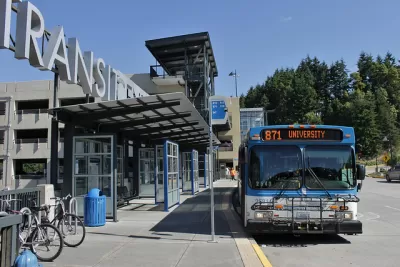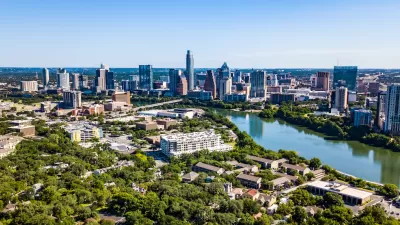The new "Solving the Climate Crisis" report could provide guidance and direction if federal leadership in Washington, D.C. finally decides to take aggressive steps to reduce carbon emissions and adapt to a changed climate.

The House Select Committee on the Climate Crisis released a new "Solving the Climate Crisis" report this week, calling specific attention to the ability of local planners to work for climate solutions, according to an article by APA Policy Director Jason Jordan.
"Over its more than 500 pages 'Solving the Climate Crisis' outlines big goals, economy-wide net zero carbon emissions by 2050, big aspirations, a new national commitment to a 'moonshot' approach to climate change, and granular policy detail covering a wide range of topics," according to Jordan.
"The recommendations are built around 12 'key pillars' with detailed legislative suggestions in each area. The pillars cover infrastructure, clean energy, zero-emission technology, workforce issues, environmental justice, public health, agriculture, resiliency, natural resources, national security and international leadership, and core institutions."
While the report has virtually nop hope of becoming law, according to Jordan, the report could influence climate legislation under a new administration in the Executive Branch or new leadership in Congress. The report also lays out specific steps for local planners to lead on climate action, and calls for a stronger federal role in supporting the work of planning on issues like "building codes, setting resiliency standards, overhauling flood mapping, providing better data to communities, funding mitigation, and bolstering local community engagement," according to Jordan. The call for a stronger role for planning expertise echoes similar sentiments in a recent article about the role of the planning profession during the pandemic.
FULL STORY: Congress Looks to Planning as a Climate Crisis Solution

Trump Administration Could Effectively End Housing Voucher Program
Federal officials are eyeing major cuts to the Section 8 program that helps millions of low-income households pay rent.

Planetizen Federal Action Tracker
A weekly monitor of how Trump’s orders and actions are impacting planners and planning in America.

Ken Jennings Launches Transit Web Series
The Jeopardy champ wants you to ride public transit.

Congress Moves to End Reconnecting Communities and Related Grants
The House Transportation and Infrastructure Committee moved to rescind funding for the Neighborhood Equity and Access program, which funds highway removals, freeway caps, transit projects, pedestrian infrastructure, and more.

From Throughway to Public Space: Taking Back the American Street
How the Covid-19 pandemic taught us new ways to reclaim city streets from cars.

Opinion: Transit Agencies Must View Service Cuts as Last Resort
Reducing service could cripple transit systems by pushing more riders to consider car ownership, making future recovery even less certain.
Urban Design for Planners 1: Software Tools
This six-course series explores essential urban design concepts using open source software and equips planners with the tools they need to participate fully in the urban design process.
Planning for Universal Design
Learn the tools for implementing Universal Design in planning regulations.
Heyer Gruel & Associates PA
Ada County Highway District
Institute for Housing and Urban Development Studies (IHS)
City of Grandview
Harvard GSD Executive Education
Toledo-Lucas County Plan Commissions
Salt Lake City
NYU Wagner Graduate School of Public Service





























